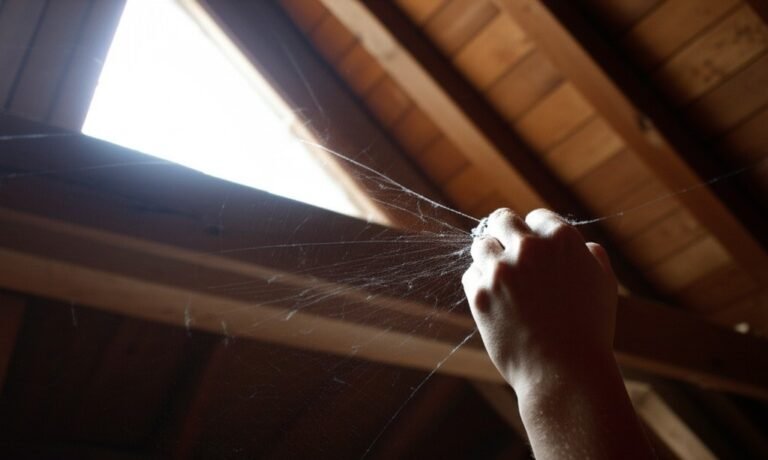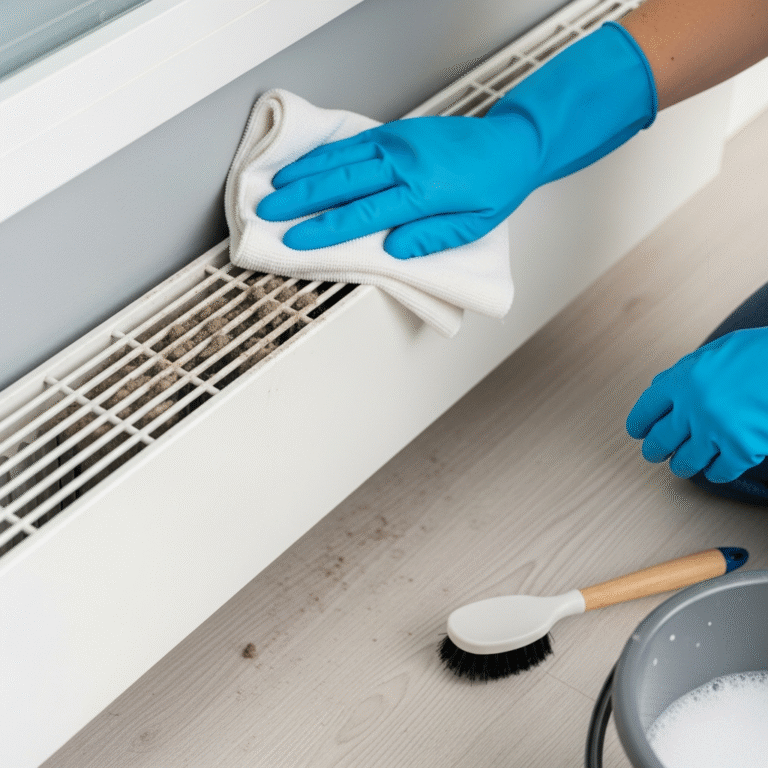The arrival of August in Canada brings a specific, almost magical, change to the morning light. Spiders and their webs, the sun sits lower, and the air holds a hint of the coolness to come. This new light, combined with the morning dew, reveals something that has been building all summer but has remained largely invisible: a sudden, pervasive network of spider webs. They appear on porch railings, stretch between shrubs, frame every window, and cling to the eaves of the house. It can feel like an overnight invasion, a silken siege on your property. This phenomenon is not your imagination. Late summer is the peak season for many species of orb-weavers and other spiders. They have spent the spring and summer growing to maturity, and August is when their populations, and therefore their webs, are at their most numerous and conspicuous. Understanding how to manage this seasonal surge requires a systematic approach that addresses both the existing webs and the conditions that invite them.
1.Complete Removal
The first step is a thorough and methodical removal of all visible webs. For the exterior of your home, your primary tool should be a long-handled duster or a clean broom with soft bristles. The goal is not simply to tear the webs down, but to capture them. A simple swipe will often break the web, leaving sticky anchor points and strands behind that will quickly collect dust and debris. Instead, use a gentle, rolling or twisting motion. Press the head of the broom or duster into the center of the web and rotate it. The silk will adhere to the bristles, winding around the tool like cotton candy. This technique removes the bulk of the web cleanly and often catches the spider along with it. Work your way systematically around the perimeter of your home. Pay close attention to corners, under eaves, around porch lights, window frames, door frames, and beneath deck railings. These are all prime locations for spiders as they offer shelter and are high-traffic areas for the flying insects they prey on.
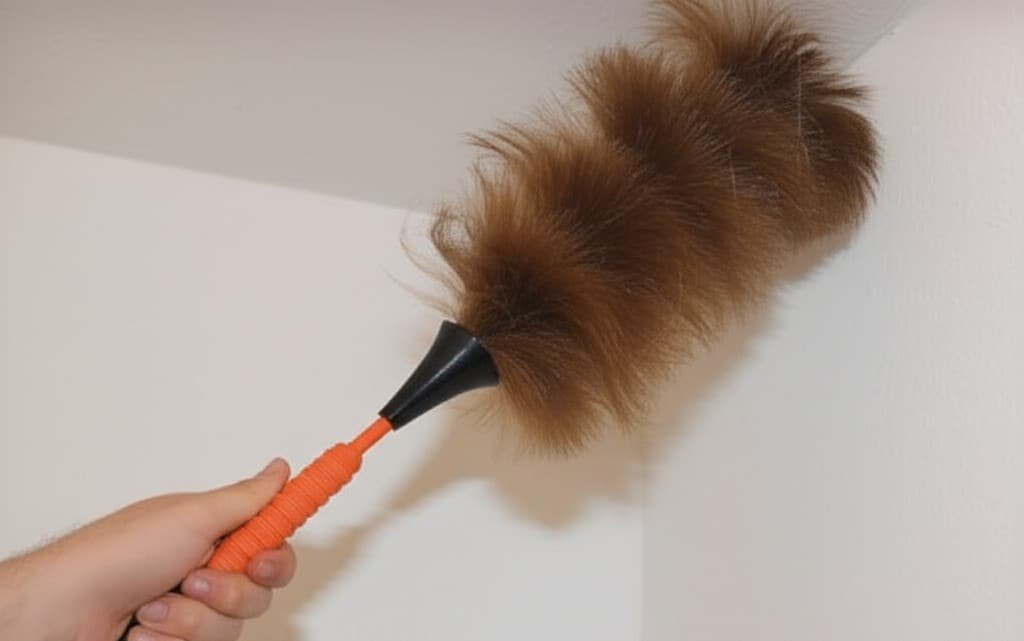
2.Hose
For webs that are particularly stubborn or in hard-to-reach places, a garden hose with a high-pressure nozzle can be effective. A strong jet of water will dislodge the webs and wash away the residue. However, this method is less precise and can sometimes just push the webs into other areas. Be mindful of spraying water directly into vents, under siding, or at window seals, as this can lead to moisture problems. A pressure washer can also be used, but it requires extreme caution. Use the lowest possible pressure setting and a wide-angle fan tip. High pressure can strip paint, damage wood, and force water behind your siding, causing significant and costly damage. For most residential situations, a standard hose is the safer and more appropriate choice.
3.Dish Soap
After the initial removal, you will likely notice a faint, sticky residue where the web’s main anchor points were attached. This residue is what new spiders will often use as a foundation for their own webs. Cleaning this off is a crucial step in preventing a quick return. For painted surfaces, siding, and window frames, a simple solution of warm water with a small amount of dish soap is effective. Use a sponge or a soft-bristled brush to gently scrub the areas. For glass, a standard window cleaner or a solution of equal parts water and white vinegar will remove the residue and leave the surface streak-free. This follow-up cleaning might seem tedious, but it removes the “scent trails” and structural remnants that signal a viable web location to other spiders.
4.Vacuum Cleaner
The interior of your home requires a more delicate touch. The single most effective tool for removing indoor spider webs is a vacuum cleaner with its hose and attachments. The crevice tool is perfect for reaching into the corners where walls meet the ceiling, along baseboards, and behind furniture. The brush attachment is ideal for more delicate surfaces like lampshades, curtains, and bookshelves. The power of the vacuum ensures you are not just removing the web, but also the spider and, most importantly, any unseen egg sacs. An egg sac can contain hundreds of spiderlings, and simply dusting it away can cause it to rupture, releasing them into the room. Vacuuming contains the problem entirely. Make it a habit to use the vacuum attachments to trace the upper and lower perimeters of every room during your regular cleaning routine. This proactive measure will catch new webs before they become noticeable. Areas that are often overlooked include basements, garages, and attics. These quiet, cluttered, and often damp spaces are ideal habitats for spiders. A thorough vacuuming of these areas, moving boxes and storage containers to get into the corners, is essential for controlling the indoor population.
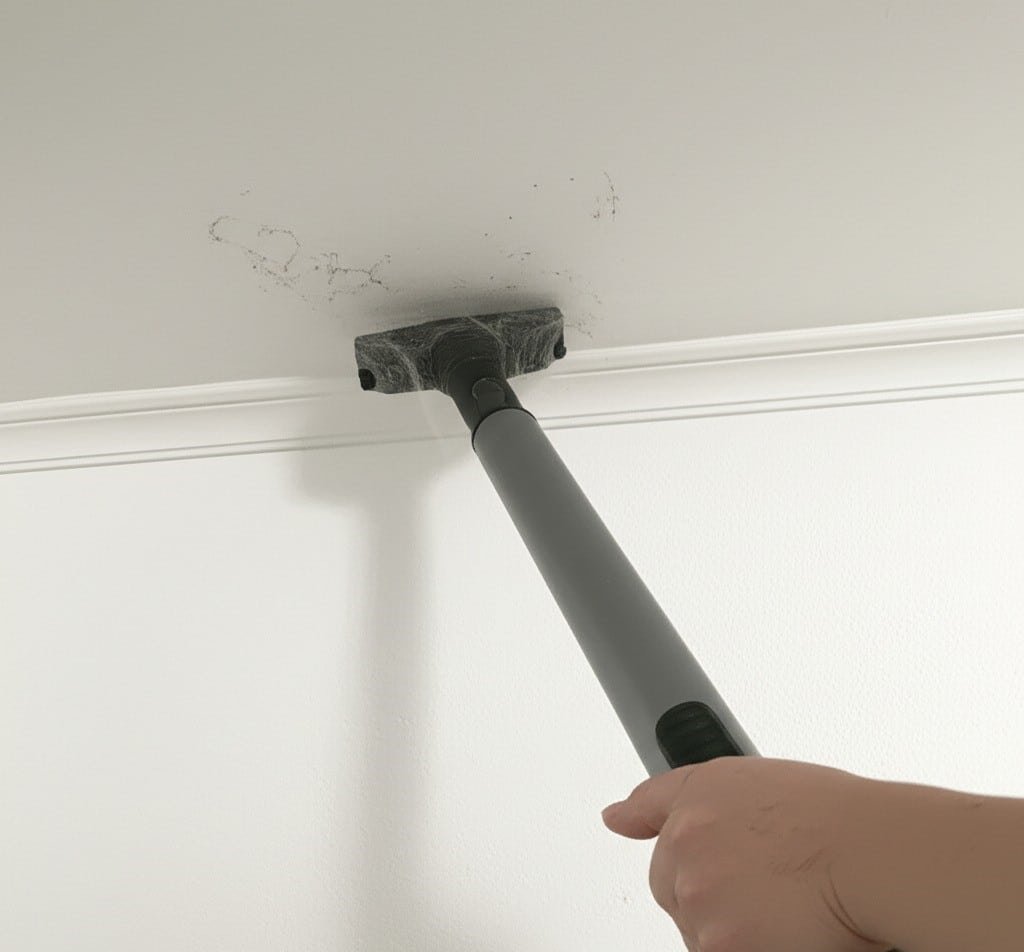
5.Prevention
Once the existing webs are gone, the focus must shift entirely to prevention. Removing webs is a temporary solution; creating an environment that is unattractive to spiders is the long-term goal. This strategy begins with controlling their food source: insects. Most insects are attracted to light, particularly bright, white light. The classic porch light is a nightly buffet for moths, gnats, and other flying creatures, which in turn attracts spiders who build their webs nearby to catch this easy prey. A simple and highly effective change is to switch your exterior bulbs to yellow “bug lights” or sodium vapor lights. These bulbs emit a wavelength of light that is far less visible and attractive to most insects. This single change can dramatically reduce the number of insects congregating around your doors and windows, and consequently, the number of spiders setting up camp. Alternatively, consider installing motion-activated security lights instead of lights that stay on all night. The light will only come on when needed, creating a less reliable food source for the spiders.
6.Block
The next line of defense is to physically block their entry into your home. Spiders are masters of finding small openings. Conduct a detailed inspection of your home’s exterior. Look for cracks in the foundation, gaps around pipes and utility lines where they enter the house, and torn or ill-fitting window screens. Use caulk to seal any cracks and crevices you find. Install weather stripping around doors and windows to create a tighter seal. Ensure your window screens are in good repair and fit snugly in their frames. Pay special attention to the door sweep at the bottom of your exterior doors; if you can see daylight underneath, it’s a wide-open invitation for spiders and other pests. These small, diligent repairs create a formidable barrier that makes it much harder for spiders to move from the outside to the inside.
Your landscaping can also play a significant role. Spiders use plants, shrubs, and trees as bridges to get from the ground to your house. If you have bushes or tree branches touching your home’s exterior, it’s like rolling out a welcome mat. Trim back all vegetation so there is at least a foot of clearance between the plants and your walls. This creates a buffer zone that makes access more difficult. Similarly, avoid storing firewood or compost piles directly against the house. These provide excellent, sheltered habitats for spiders and countless other insects. Move them to a location further away from your foundation.
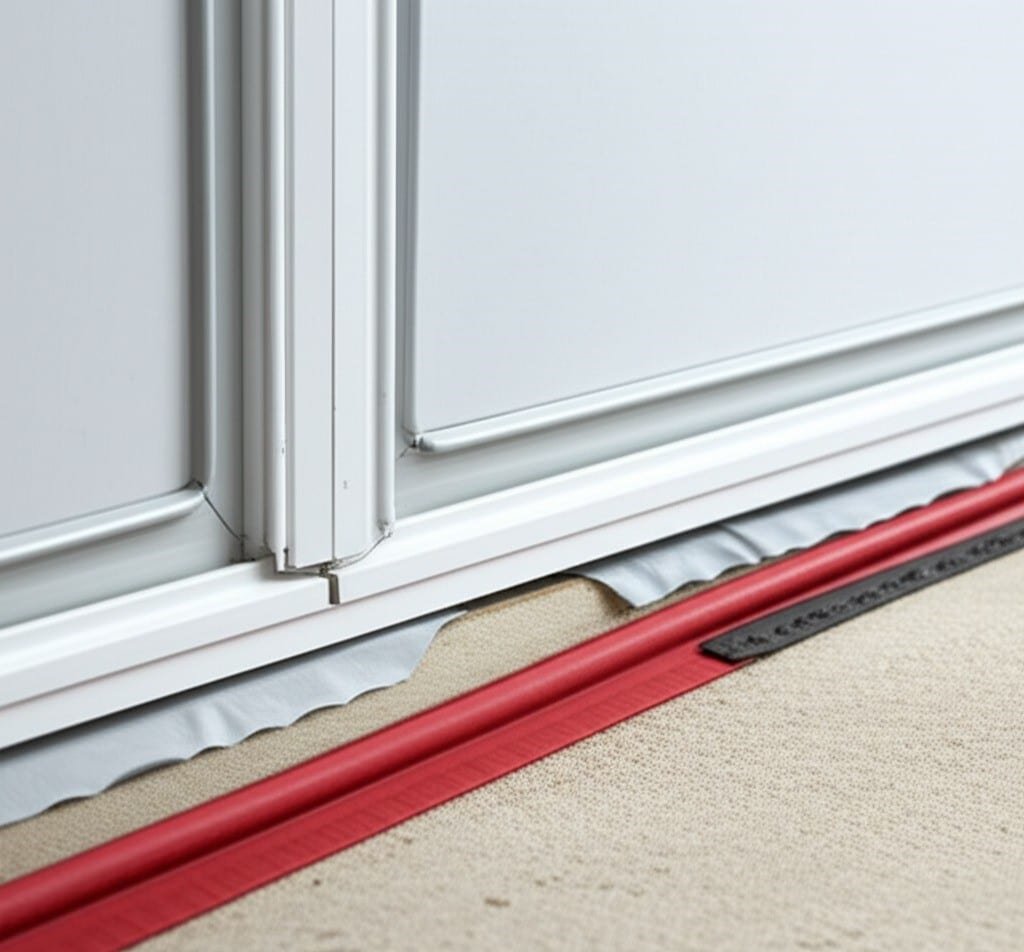
7.Clean Regularly
Inside the home, reducing clutter is a key preventative measure. Spiders are reclusive and seek out quiet, undisturbed places to build their webs. Piles of cardboard boxes in the basement, stacks of old magazines in the garage, or cluttered closets provide an abundance of ideal hiding spots. By decluttering these storage areas, you eliminate potential habitats. Store items in sealed plastic totes rather than cardboard boxes, as they are much more difficult for pests to penetrate. Regular dusting and vacuuming in these less-frequented areas will also disturb any spiders that are attempting to settle in, encouraging them to move on.
At the end, you can employ natural repellents to make key areas actively hostile to spiders. Spiders have sensory organs on their legs and are highly sensitive to strong scents, which they find overwhelming and unpleasant. Peppermint oil is one of the most well-known and effective natural spider repellents. Mix 15-20 drops of pure peppermint oil with water in a spray bottle and add a drop of dish soap to help the oil and water emulsify. Spray this solution liberally around window frames, door frames, in corners, and along baseboards. The scent is pleasant to humans but deters spiders from crossing the sprayed barrier. It needs to be reapplied every week or so, as the scent will fade.
8.White Vinegar
White vinegar is another powerful deterrent. Its strong acetic acid smell is repulsive to spiders. You can use the same spray bottle method, mixing equal parts white vinegar and water. This solution can also be used to clean surfaces, providing a double benefit of removing web residue while leaving behind a repellent scent. Be cautious using vinegar on natural stone surfaces like marble or granite, as the acid can cause etching. Citrus scents, particularly lemon and orange, are also disliked by spiders. You can rub fresh citrus peels along window sills and bookshelves or use a citrus-based essential oil in your spray bottle. Cedar is another natural choice. Placing cedar blocks or shavings in closets, attics, and basements can help repel spiders and other insects like moths. The combination of sealing entry points, managing lighting, maintaining your landscape, reducing clutter, and using natural repellents creates a multi-layered defense that makes your home a much less hospitable place for the annual August spider web bloom.
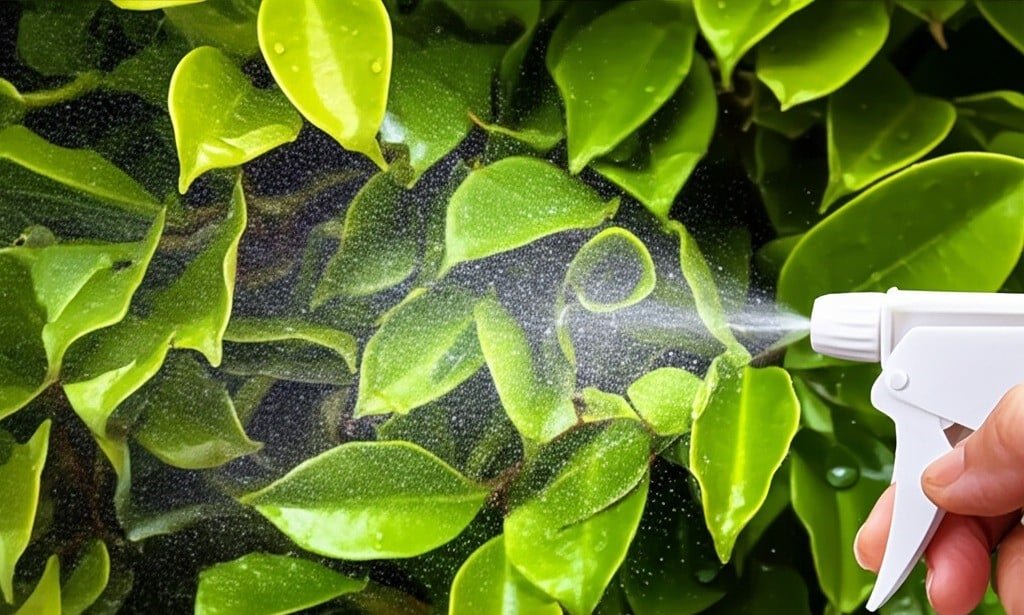
Managing this late-summer phenomenon is not a single action but a continuous process. A weekly walk around your property with a long-handled duster to catch new webs before they become established, combined with a monthly check of seals and a reapplication of natural repellents, can keep the problem under control. It is about disrupting their cycle and making your home an unappealing target, allowing you to enjoy the pleasant late-summer weather without navigating a gauntlet of sticky webs every time you step outside.
This comprehensive approach, combining diligent removal of existing webs with proactive prevention strategies like sealing entry points, managing outdoor lighting, and using natural deterrents, is the most effective way to handle the seasonal increase in spider activity. For a comprehensive solution to the late-summer web takeover and all your deep cleaning needs, the professionals at Toronto Shine Cleaning are equipped to restore your home’s pristine condition.













